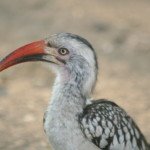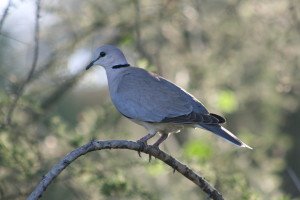The John McFarland Column: SA’s SuperRugby downgrade hard to understand 0
Sanzaar obviously had to make changes to SuperRugby because the crowds were not reflecting the status of the competition, but I struggle to understand why South Africa have to give up two teams.
Our previous wins at the Sanzaar negotiating table have been because we could always use the threat of going to Europe and our TV figures to get our own way.
So why do New Zealand keep five franchises and South Africa have just four, but we’re a much bigger nation! I know the argument based on the performance of the teams, but in 2013 we had four teams in the top eight and in 2012 three sides in the top six. So we have had the strength, and the Bulls were a dominant force in SuperRugby from 2005-2010, which is not so long ago!
So I struggle to comprehend how a team like the Cheetahs, who are such a strong rugby region, can be facing the axe. Everyone understands that the Kings will have to go due to their financial woes and because they are propped up by Saru, but it will be very disappointing to lose the Cheetahs after they have been in SuperRugby for so long. And the Free State and Griqualand West region has provided a heck of a lot of players who have gone on to greater things.
What really concerns me is that the Springboks will miss out on an extra 30 players to choose from, while New Zealand will have a pool of 150 SuperRugby players, a 20% bigger selection pool.
And it’s easy to say we will retain more players because we will now have more money, but as Faf de Klerk’s offer from Sale shows, guys can still earn more than triple what they’ll get in South Africa by going overseas. I believe we’ll actually retain fewer players because there will be less opportunity with only four franchises. Our coaching ranks will also be diminished with less opportunity for them too.
The funny thing is, a year ago Sanzaar said everything was fine and a big fuss was made about how the new format would mean much less travel for South African sides – a maximum of two flights overseas.
The tournament did need expansion and Argentina have now been able to keep their best players, they haven’t gone to Europe, because there’s a clear pathway for them to develop and express themselves at the highest level. We’ve seen that with the Sunwolves too.
People say it’s not our job to develop rugby in South America and Asia, but that’s shortsighted. Rugby has to be a global game, if it just stayed within the Commonwealth and Argentina, it would die.
Exposing a team from Japan to higher levels of rugby has certainly brought an improvement to their play. There were 22 000 people at the Bulls game in Tokyo and the excitement was incredible, especially considering that the last game in Tokyo saw the Sunwolves lose 83-17 to the Hurricanes!
But there was a great atmosphere and huge interest in the Bulls game, but more on that shock result later on.
In my view, the SuperRugby format should be a 16-team competition – so five New Zealand and South African franchises, four from Australia and the Sunwolves and Jaguares – with everyone playing everyone else once. You would have two three-week tours as part of that.
Six teams would then progress to the playoffs, with the top two sides initially having a bye straight into their home semis against the winners of the quarterfinals, which would be third versus sixth and fourth against fifth.
This weekend I am really looking forward to the match between the Lions and the Stormers, which should be a high-tempo, all out attacking game, but the side that defends best will win it. For the main Easter weekend game to be between the two conference leaders is going to provide a great spectacle.
The quality and skill level of the Stormers last weekend against the Chiefs shows that they have reached a new dimension and you have to credit Robbie Fleck and his staff, and the players, for their willingness to play like that. It’s really high-risk, high-reward rugby and, believe me, it has to be coached!
What was especially pleasing was the way they really matched a New Zealand team at the back end of the game, when it’s normally been a huge struggle for South African teams.
The Sharks also had a good win, even though they are not scoring a lot of tries. They are playing off the other side’s mistakes, like their spectacular intercept try against the Jaguares.
They hung on in there against the Argentinians and it was an important win for their conference, although they will be a bit disappointed they gave the Jaguares a point. But it’s good that they were able to grind it out, hopefully they can get on a roll and get their confidence going.
The humidity in Durban made the ball very slippery and there were similar conditions for the Bulls in Tokyo, a match I was fortunate enough to attend. It was very wet and the Sunwolves managed the conditions better. The Bulls are not far off but they were simply not good enough last weekend.
They took time to get into their stride, they struggled to get control of the game. But then they had control when they were nine points ahead, they were in the pound seats, but the yellow card obviously had a huge influence.
After that the Sunwolves took a scrum with 10 minutes to go and scored the matchwinning try. The lesson for the Bulls is that when a backline player like Jan Serfontein gets a yellow card, then you must replace him. It’s better to have a full backline because you need that speed on defence. It was standard procedure when I was with the Springboks that if a backline player got a yellow card late in the game then we would take a forward off and replace him. Otherwise you’re defending with six versus seven, which is why the Sunwolves were able to break out so easily.
The Sunwolves were also able to keep the ball in play and did a good job of nullifying the Bulls’ lineout maul threat by standing off. That meant the Bulls had to mostly play from static ball. The home side were also very good with their kicks and chips, while the Bulls could have done much better with their chips, especially the one from their own 22 that led to a try.
The Bulls will be really hurting, but they now have a lot of games at home. No other team in the competition has had such a tough start away from home, and the Bulls will now hope they can get some form and a winning run at Loftus Versfeld.
John McFarland is the assistant coach of the Kubota Spears in Japan and was the Springbok defence coach from 2012 through to the 2015 World Cup, where they conceded the least line-breaks in the tournament and an average of just one try per game. Before that, McFarland won three SuperRugby titles (2007, 09, 10) with the Bulls and five Currie Cup crowns with the Blue Bulls. In all, he won 28 trophies during his 12 years at Loftus Versfeld.




